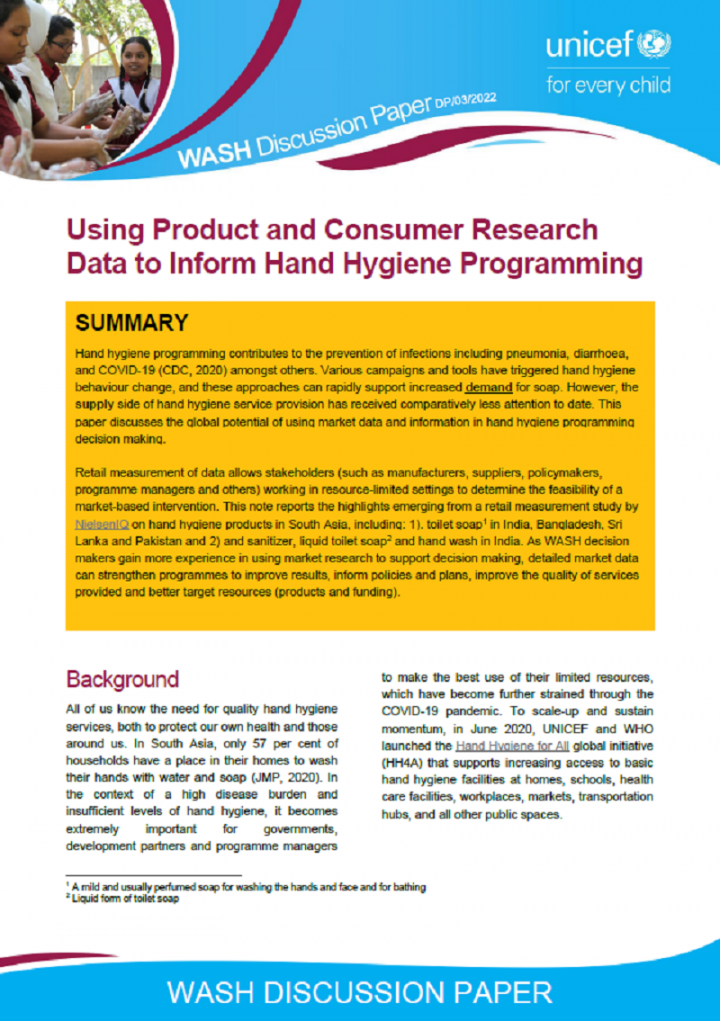
Published in: 2022
Pages: 10
Publisher:
UNICEF
Author:
UNICEF
Uploaded by:
SuSanA Admin
749 Views
3 Downloads
Hand hygiene programming contributes to the prevention of infections including pneumonia, diarrhoea, and COVID-19 (CDC, 2020) amongst others. Various campaigns and tools have triggered hand hygiene behaviour change, and these approaches can rapidly support increased demand for soap. However, the supply side of hand hygiene service provision has received comparatively less attention to date. This paper discusses the global potential of using market data and information in hand hygiene programming decision making.
Retail measurement of data allows stakeholders (such as manufacturers, suppliers, policymakers, programme managers and others) working in resource-limited settings to determine the feasibility of a market-based intervention. This note reports the highlights emerging from a retail measurement study by NielsenIQ on hand hygiene products in South Asia, including: 1). toilet soap1 in India, Bangladesh, Sri Lanka and Pakistan and 2) and sanitizer, liquid toilet soap2 and hand wash in India. As WASH decision makers gain more experience in using market research to support decision making, detailed market data can strengthen programmes to improve results, inform policies and plans, improve the quality of services provided and better target resources (products and funding).
Bibliographic information
UNICEF (2022). Using Product and Consumer Research Data to Inform Hand Hygiene Programming. UNICEF
Filter tags
English South Asia














